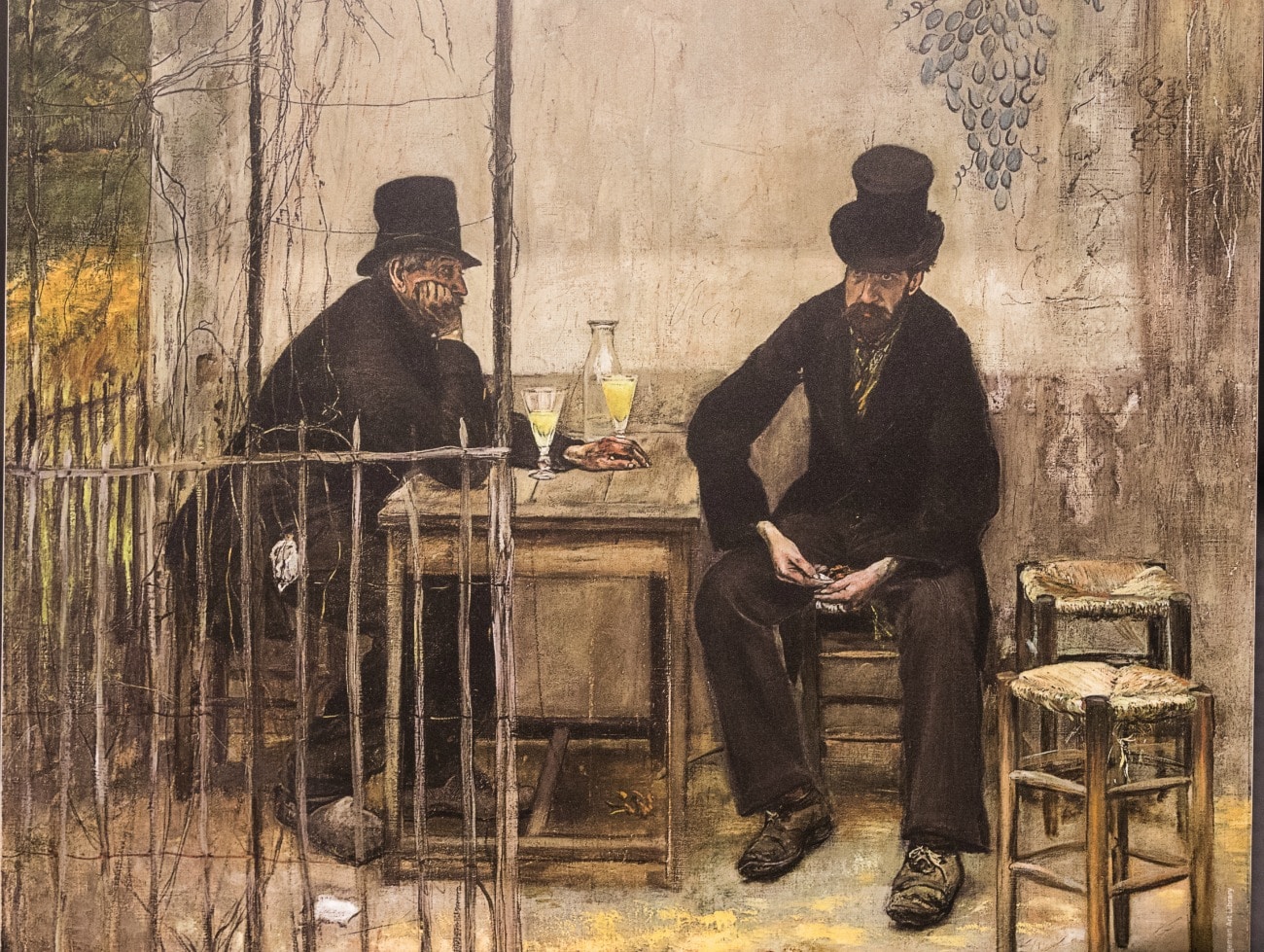It’s been said that a mythical Green Fairy liked to play hide and seek with the unsuspecting citizens of Val-de-Travers in Switzerland. Nobody saw her during the daylight hours; it was at night when she came out and twisted the minds of innocent men who wanted to have a drink or two at the end of a day.
But not only in Val-de-Travers it turns out. The Green Fairy, otherwise known as absinthe, spread her wings wide. Oh yes, very wide! Very popular in Paris in the second half of the 19th century, absinthe is said to have enhanced the creativity of artists and writers such as Van Gogh, Degas, Gauguin, Pablo Picasso, Toulouse-Lautrec, Oscar Wilde, and of course, Hemingway. Degas’ painting Dans un café (In a Café), also called l’Absinthe (Absinthe), and Picasso’s La Buveuse d’Absinthe (The Absinthe Drinker) are on display in the Musee d’Orsay in Paris and attest to the widespread predominance of the spirit.
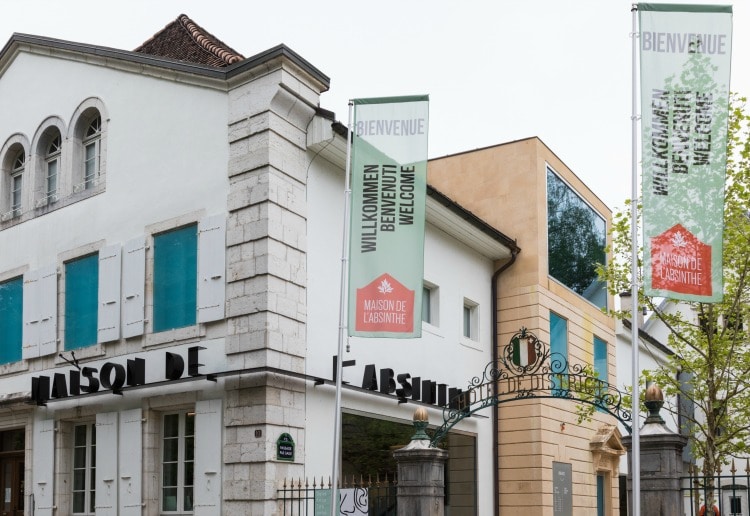
Getting to Know the Spirit of Absinthe
To learn more about this intriguing and intoxicating alcoholic libation, we visited La Maison de l’Absinthe, an excellent museum in the small town of Môtiers, Val-de-Travers. Its displays of artifacts, antique posters, graphics, and literature are an immersion course of sorts into absinthe’s history and prevalence. And outside is a garden brimming with many of the traditional herbs used in its creation.
This controversial liqueur originated in Val-de-Travers, in the French-speaking canton of Neuchâtel in western Switzerland in the eighteenth century but it dates back much further than that. Considered a cure-all for illnesses, allegedly even Hippocrates prescribed it in some form for different ailments. Green in color due to the many herbs used in its preparation, absinthe was affectionately called The Green Fairy.
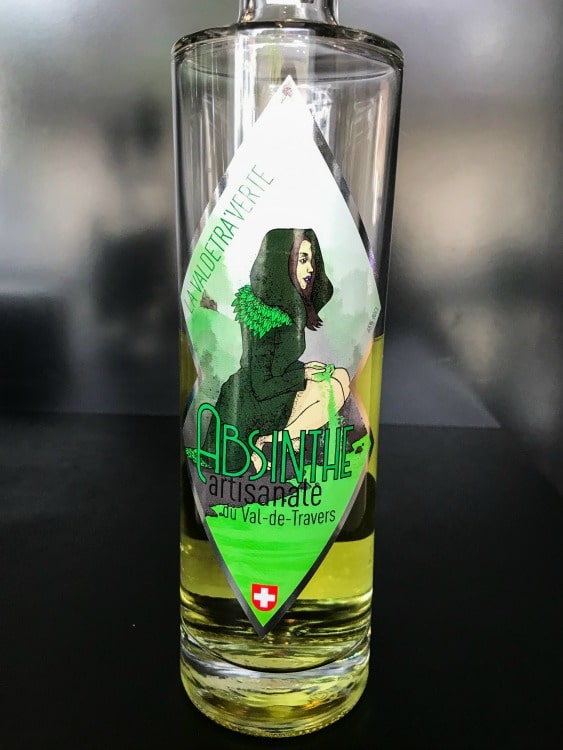
The Makings of Absinthe
The spirit beloved by the creative class almost always contains these basic ingredients: wormwood, green anise, florence fennel, melissa, mint, and hyssop. Some distillers might add licorice, mugwort, veronica, angelica, coriander, star anise, or sage. For color: nettle, spinach, cardamom, elderberry, bergamot, chamomile, ironweed and lime leaves are used. Regardless of any other ingredients, anise is always used; it contains the essential oil anethole, which is soluble in alcohol but not in water. Mixing it with water forms a substance that turns a drink cloudy.
Distillers use more or fewer of the optional herbs, creating a variety of liquids that all look, smell, and taste differently. For example, one might be green or clear, smell like vermouth, or taste faintly reminiscent of licorice. The alcohol content also varies, from 45%/vol. to 70% or more.
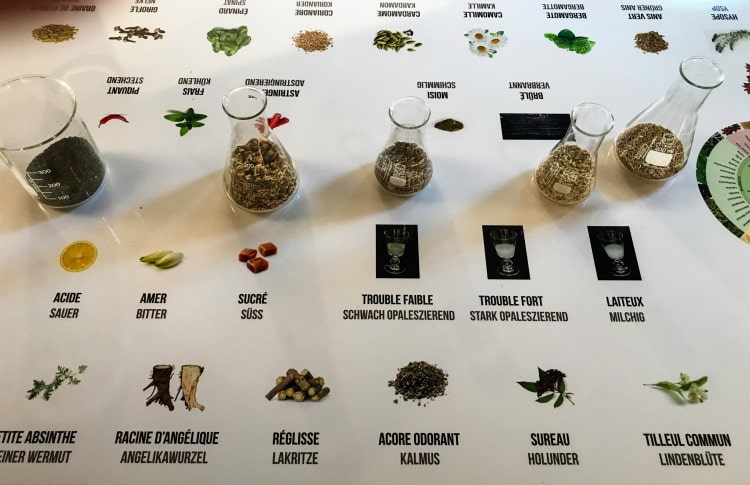
Absinthe Goes Underground
As popular as absinthe was in the 19th century, over time it acquired a reputation for causing hallucinations and other psychoactive effects. The culprit was thujone, a potent mind-altering substance found in wormwood, and one of its main ingredients. After a tragic event was attributed to its consumption, absinthe was banned in Switzerland on October 7, 1910. But it didn’t disappear; it just went underground and was clandestinely distilled in Val-de-Travers.
Distributed by bootleggers known as résistants, it was something of an open secret, even appearing in newspapers, but ignored by authorities unless something happened. When a headline such as, “Familiar odor found in car trunk after crash: Absinthe!” appeared, authorities were obliged to investigate and had no choice but to prosecute. A local ‘heroine’ was Berthe Zurbuchen, also called La Malote, known for distilling one of the best absinthes ever. It’s said that her standard trade was two bottles of Le Bleu – for its bluish tinge for two bottles of grain alcohol which she used to produce more absinthe. She died in 1969 at age 88.
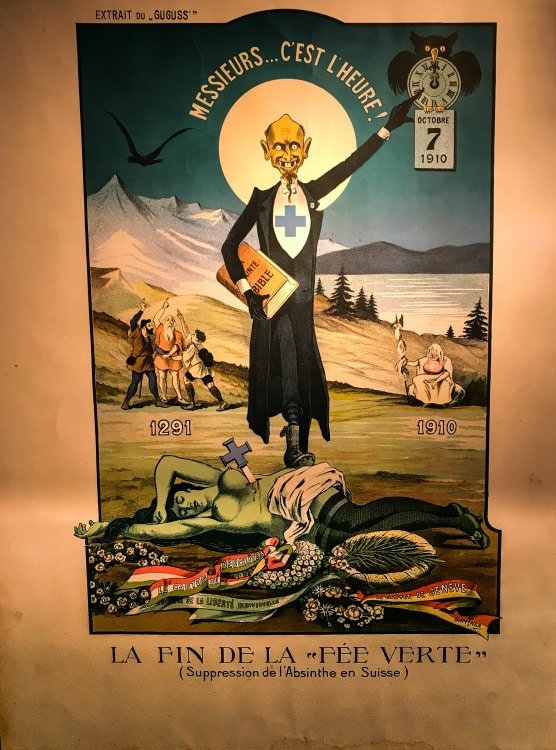
The Green Fairy Spreads Her Wings Again
Nearly 100 years later, on March 1, 2005, absinthe was again legalized in Switzerland, in sync with other European countries. The content of thujone allowed was significantly reduced to 35 mg/kg. Alas, absinthe was no longer psychedelic, and The Green Fairy again danced in the aisles.
The traditional sacred ritual of sipping absinthe is to take a stemmed glass, add absinthe, then place a sugar cube on an absinthe spoon, a specially designed spoon forged with apertures for pouring water over the cube and with a lip for resting on the rim of the glass. The water must be ice-cold and if preferred, ice cubes may be added. It’s important to pour the water slowly to bring out the aromas of the herbs. The ratio is usually 1/3 absinthe, 2/3 water. Connoisseurs might even invest in a special water fountain.
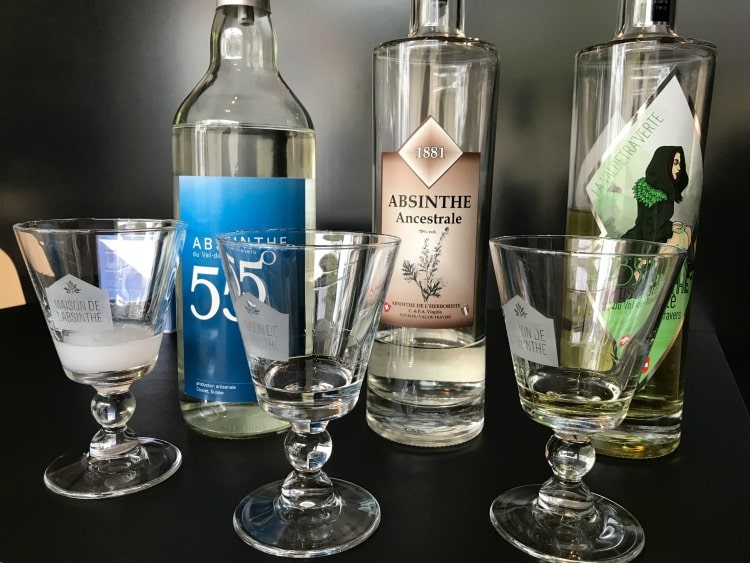
Time to Imbibe
After spending a couple of hours upstairs in the museum, we were ready to relax and see what The Green Fairy would do to us. So, we headed down to the café on the first floor where the staff was cheerful and eager to teach us more. There we decided to taste a trio of absinthes — one of them aptly called The Green Fairy! Each had a different flavor and alcohol content, and we were instructed to begin with the lowest percentage and progress to the highest. A table was then set which included the special water fountain filled with cold water and ice cubes. Some delicious almond cookies were a welcomed addition.
After a few sips, we closed our eyes and imagined ourselves in one of the Parisian saloons of the 19th century. Santé!
[alert type=white]
La Maison de l’Absinthe
Grande Rue 10
2112 Môtiers (Neuchâtel), Switzerland
+41 32 860 1000
www.maison-absinthe.ch
[/alert]

